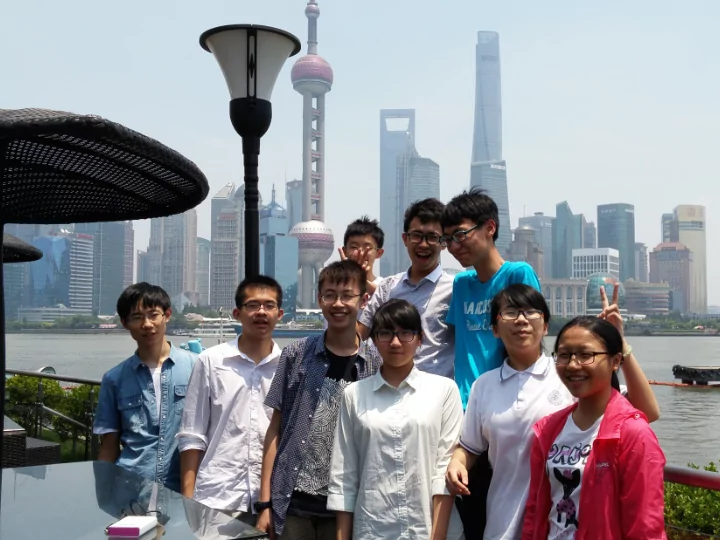

The Preservation and Cleanse of Lithic Cultural Relics with Mineralization Method in Hangzhou Hangzhou-H14Z Hangzhou-H14Z
Inscription Categories Tower of lithic relics in Statue Hangzhou
Statue Surface of Feilai Peak Sculpture was Severely Ruined (2002)
Statue Mountain Leaking near Ciyunling Sculpture (2002)
Towers Contamination by trains’ exhausts White Tower (2002)
Inscription
Old Method
Clothes Contrast Sculpture Contrast
Contamination by trains’ exhausts White Tower (2002)
MEANWHILE WE NOTICED SOMETHING BIZARRE
Why We Choose Calcium Oxalate SEM of Calcium Oxalate 7 SEM of Calcium Carbonate 7
Goal CLEAN FORM SET
Old Ways of Oxalic Acid If we use chemical methods to generate calcium oxalate, we have to immerse the lithic relics in the chemical liquid; however, it is not suitable for the preservation of large-scale outdoor lithic relics. In fact, the natural existing calcium oxalate comes from the reaction of oxalic acid generated by microorganism and calcium compound on the surface of stone. New Thoughts! This research project will utilise genetic engineering methods to "graft" the gene that generates calcium oxalate into Escherichia coli (E. coil). Then oxalic acid reacts with calcium lithic relics to generate calcium oxalate, which stimulates its natural formation process. Finally, there forms a fine layer to protect the lithic relics.
Modeling According to Logistic Regression equation • N : the number of individuals in the group • t : time • N 0 : the original number of individuals in the group • r : the index of growth potential of the group • K : the maximum environment capacity using the data of r=0.550, K=1.937 and N 0 =0.1, we got the quantity of E.coli-time equation.
Modeling Here is a graph to help to visualize the equation. Assuming there is x% of E.colican be successfully expressed, we used the equation in last slide to multiplyby the x% to get the quantity of expressed bacteria-time equation,f ex .
Modeling Here is a graph to help to visualize the equation. Assume a unit of expressed bacteria can have OxalicAcid produce speed of v . we can get total speed equationbymultiplyingv to last equation. By integratingthe total speed equation, we can get the quantityofOxalic Acid-time equation,S oa .
Modeling n : decomposed lipid N : initial quantityof lipid k : a constant related to efficiency t : time Because the decomposition speed should be direct proportion to quantity of remain lipid and quantity of expressed bacteria, we got the differential equation: dn/dt=k*(N-n)*f ex By solving this equation, we found the relationship between remain lipid and time, which is S lp above.
Modeling
Escherichia coli
Parts Bba_K1671000 LacI R0010 OAH B0034 B0015 EcoRI XbaI SacII NheI SpeI PstI S P E X S N Bba_K1671001 LacI R0010 B0034 Lipase B0015 XbaI SacII EcoRI NheI SpeI PstI S P E X S N
Bba_K1671000 LacI R0010 OAH B0034 B0015 EcoRI XbaI SacII NheI SpeI PstI S P E X S N Oxaloacetate Acetylhydrolase Oxaloacetic Acid Oxalic acid
Bba_K1671001 LacI R0010 B0034 Lipase B0015 XbaI SacII EcoRI NheI SpeI PstI S P E X S N Triacylglycerol Acylhydrolase Oil
PCR Primer Lipase E. coli
Cutting Test Sequencing
Glyceryl Tributyrate + Victoria Blue Victoria Blue Glyceryl Tributyrate Lipase Lipase
FUTURE
Human Practice Human Practice
What did we focus on? l Collaboration l Public Outreach & Ethics l End-User Consideration l Education
Collaboration Zhejiang University Team Hangzhou #4 High School Team
Public “Transgenosis Food” • Outreach Questionnaires & Postcards • & Twitter • Ethics
Transgenosis Food
Questionnaire & Postcards HOW DO YOU KNOW ABOUT LITHIC RELICS? Do not Know at All Do not know the preservation of Lithic Relics Know the protection of Lithic Relics 12% 88% 11% 1%
“According to the principle, there is certain feasibility, because the principle of chemical coating is the main component of waterproof material, such as sodium silicate, can quickly and End-User effectively concrete structure layer of calcium hydroxide, calcium, calcium Consideration silicate, such as reaction, to form the wool stoma of inert crystals embedded in concrete, to airtight micro cracks, Civil Engineering thereby increasing the compactness of concrete surface layer and the compressive strength. In the study of the biological mechanism of action of anticorrosion materials and similar is feasible in theory, but in the specific application, also need to further study of the role of timeliness, economy.” ------ Prof. Huang
Education Presentation School’s Official Website
Bibliography 1.Li Haijun, Wang Lingang, Wang Zhize, Chen Fang, and Gao Jianfeng Induced Secretion Expression of Lipase Gene from Bacillus subtili in E. coli 2.Chen Chen, Qihong Sun, Buvaneswari Narayanan, Donald L. Nuss, and Osnat Herzberg Structure of Oxalacetate Acelhydrolase, a Virulence Factor of the Chestnut Blight Fungus 3. Nanjun Li, Hangzhou No. 14 High School Study Hangzhou Relics Preservation from Feilai Peak-- Hangzhou Lithic Relics General Research 4. Shiyi Li, Kexie Zhang, Liya Wang Hangzhou Feilai Peak Lithic Relics Preservation 5. Bingjian Zhang, Haiyan Yin, Zhongyue Shen, Huanming Lu The Forming Mechanism and Chemical Bionics of Crude Calcium Oxalate Bio- mineralised Film---- Development of a New Surface Conservation Material for Historic Stone Relics 6. Xiumin Yu, Xiuying Tong, Xiuling Yu The Application of Preserving Stone Relics through Bacteria 7. Xinping Li, Shandong University Crystallization Behavior of Inorganic Minerals in Calcium Alginate Gels
Acknowledgment and appreciation Prof. Jianhong Luo, from Zhejiang University Dr.Yingang Yan from Zhejiang University Hangzhou #14 High School Bio-technology Laboratory Sponsor Hangzhou #14 High School (Special Found for experiment reagent and apparatus) HangzhouMutisecience Lianke Biotech Company
Thanks for listening!
Recommend
More recommend